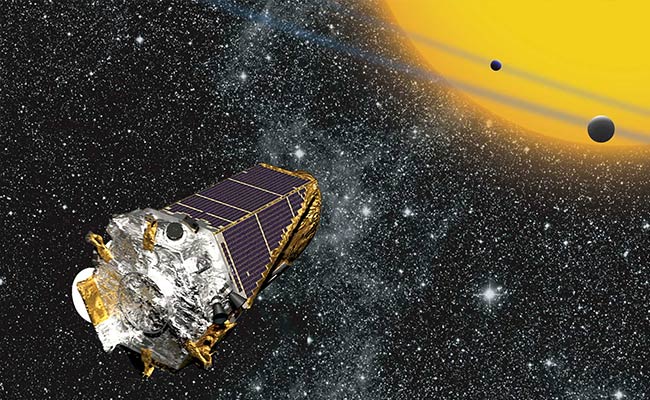-
Tips for becoming a good boxer - November 6, 2020
-
7 expert tips for making your hens night a memorable one - November 6, 2020
-
5 reasons to host your Christmas party on a cruise boat - November 6, 2020
-
What to do when you’re charged with a crime - November 6, 2020
-
Should you get one or multiple dogs? Here’s all you need to know - November 3, 2020
-
A Guide: How to Build Your Very Own Magic Mirror - February 14, 2019
-
Our Top Inspirational Baseball Stars - November 24, 2018
-
Five Tech Tools That Will Help You Turn Your Blog into a Business - November 24, 2018
-
How to Indulge on Vacation without Expanding Your Waist - November 9, 2018
-
5 Strategies for Businesses to Appeal to Today’s Increasingly Mobile-Crazed Customers - November 9, 2018
NASA’s Kepler space telescope back in action, finds over 100 alien planets
Kepler had been struggling with a mechanical malfunction recently but NASA was able to get it back into working order, and it is already hard at work hunting for new planets beyond our solar system, according to a National Geographic report.
Advertisement
The University of Arizona’s Ian Crossfield announced at a conference of the American Astronomical Society on Tuesday that the revamped mission Called K2 has so far found over 100 confirmed planets.
Many of these were orbit stars and multi-planet systems hotter and brighter than those from the original Kepler field.
A planet has also been discovered in the Hyades star cluster, which is the nearest open star cluster to our home planet.
In addition to the over 100 planets that have been discovered, there are 234 possible planets that have been observed and are awaiting confirmation, said Andrew Vanderburg of the Harvard-Smithsonian Center for Astrophysics.
“Each result from the planet-hunting Kepler mission’s treasure trove of data takes us another step closer to answering the question of whether we are alone in the Universe”, said John Grunsfeld, associate administrator of NASA’s Science Mission Directorate at the agency’s headquarters in Washington.
And because K2 looks at stars that are generally brighter and closer to Earth than Kepler did, the exoplanets that the mission finds are likely to be the best studied for the foreseeable future. During the four-year period from 2009 to 2013, the Kepler’s main goal was to determine how common Earth-like planets are and succeeded in finding more than 1,000 new planets.
The original mission, which launched in 2009, had a core mission of finding out how many Earth-like planets exist in the Milky Way galaxy.
Fresh discoveries made by the Kepler mission remind us that there’s a myriad of potentially habitable planets just waiting to be discovered. The Kepler team also has added another 554 candidates to the roll of potential planets, six of which are near-Earth-size and orbit in the habitable zone of stars similar to our sun.
However, notable discoveries of K2 are too many.
“Kepler collected data for four years-long enough that we can now tease out the Earth-size candidates in one Earth-year orbits”, said Fergal Mullally, SETI Institute Kepler scientist at Ames who led the analysis of a new candidate catalogue. Currently, Kepler is staring at Uranus, a world that is much more placid than its blue, wind-whipped sibling Neptune. This huge icy planet has an extremely windy weather. As Kepler stares at the sky, it will look for those brief blips that signify wandering worlds.
With the new mission parameters, astronomers are excited to also check out our own back yard; this, of course, means that they are examining the planets in our solar system.
Advertisement
The survey will involve other telescopes and be the first automated search to be done simultaneously from the ground and in space, says Calen Henderson, an astronomer at NASA’s Jet Propulsion Laboratory in Pasadena, California.




























